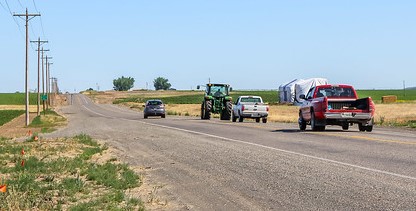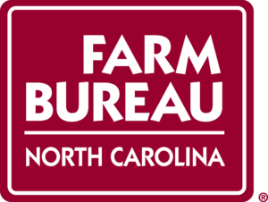Tractor Season Is Here!
go.ncsu.edu/readext?1001620
en Español / em Português
El inglés es el idioma de control de esta página. En la medida en que haya algún conflicto entre la traducción al inglés y la traducción, el inglés prevalece.
Al hacer clic en el enlace de traducción se activa un servicio de traducción gratuito para convertir la página al español. Al igual que con cualquier traducción por Internet, la conversión no es sensible al contexto y puede que no traduzca el texto en su significado original. NC State Extension no garantiza la exactitud del texto traducido. Por favor, tenga en cuenta que algunas aplicaciones y/o servicios pueden no funcionar como se espera cuando se traducen.
Português
Inglês é o idioma de controle desta página. Na medida que haja algum conflito entre o texto original em Inglês e a tradução, o Inglês prevalece.
Ao clicar no link de tradução, um serviço gratuito de tradução será ativado para converter a página para o Português. Como em qualquer tradução pela internet, a conversão não é sensivel ao contexto e pode não ocorrer a tradução para o significado orginal. O serviço de Extensão da Carolina do Norte (NC State Extension) não garante a exatidão do texto traduzido. Por favor, observe que algumas funções ou serviços podem não funcionar como esperado após a tradução.
English
English is the controlling language of this page. To the extent there is any conflict between the English text and the translation, English controls.
Clicking on the translation link activates a free translation service to convert the page to Spanish. As with any Internet translation, the conversion is not context-sensitive and may not translate the text to its original meaning. NC State Extension does not guarantee the accuracy of the translated text. Please note that some applications and/or services may not function as expected when translated.
Collapse ▲Tractor Season
It is planting season for many farmers in Surry County. Beginning now through harvest, we will find ourselves sharing the road with farm vehicles, tractors, sprayers, harvesters, and other types of oversized agricultural equipment. Farm vehicles are slower and many times wider than our cars and trucks. This makes them more challenging to maneuver quickly. It also makes it harder to move off the road without hitting mailboxes.
Farm vehicles are operated by people who are responsible for growing the food we eat, the clothes we wear, and the materials we use in our homes and businesses every single day. Let’s make sure that we all arrive to our destinations safely with a few best practices in roadway safety.
*Keep an eye out for slow-moving vehicle (SMV) signs
*Slow down when agricultural equipment enters the roadway
*Be aware that farm vehicles have major blind spots directly in front, behind, and other places around the farm vehicle depending on the equipment type and attached implements
* Be conscientious of the size of farm vehicles and the space that is needed to maneuver the equipment on roadways
*Maintain a two-car-length distance away from farm vehicles
*Be cautious of agricultural equipment making wide left turns
*Allow extra travel time if traveling through an agricultural area
Facts About Tractor Safety on the Road
By Farm Bureau of North Carolina
- From 2015-2019, there were more than 1,000 accidents on North Carolina roads involving farm vehicles, tractors, and equipment – that’s more than 200 every year.
- During that time, the top five North Carolina counties for farm vehicle accidents were Wake (40), Guilford (33), Johnston (33), Sampson (33), and Wayne (33).
- Studies have found that 82% of farm equipment crashes involve a non-farm vehicle.
- Fatalities are FIVE TIMES more likely in accidents involving farm vehicles.
- Many farm vehicles travel less than twenty-five miles per hour. A car traveling sixty-five miles per hour would close a gap the size of a football field in less than five seconds.
- Rural roads carry less than half of America’s traffic, yet they account for over half of the nation’s vehicular deaths.
- A car traveling at 70 miles per hour requires almost 400 feet of total stopping distance, and about 750 feet in wet conditions. That’s why it’s important for drivers to stay alert to improve reaction time.
- Reacting just one second earlier reduces your stopping distance by more than 100 feet when traveling at 70 miles per hour. That’s more than the length of a basketball court.
- Left turns are especially dangerous for farm vehicles – in fact the most common types of collisions involving farm vehicles are side swipes and angle crashes. These types of crashes typically occur while farm equipment is turning left, and another vehicle attempts to pass.
- Many farm vehicles make wide left turns, which makes it look like they are turning right or pulling off to allow following cars to pass. Do not make this mistake! Never pass a farm vehicle unless you are absolutely certain it is safe and legal to do so.
- Many tractor operators will signal a left-hand turn by hand, which may look like an invitation to pass. Bottom line: never pass farm vehicles in a no-passing zone.
- Tractor operators need to know you are there – for your safety and for theirs. If you follow too closely, they can’t see you. So let them know you are there by staying back at least two car lengths.
- We get it. Driving 20 miles per hour isn’t ideal. But reducing your speed from 65 to 20 miles per hour for one mile only delays you about 2 minutes!






